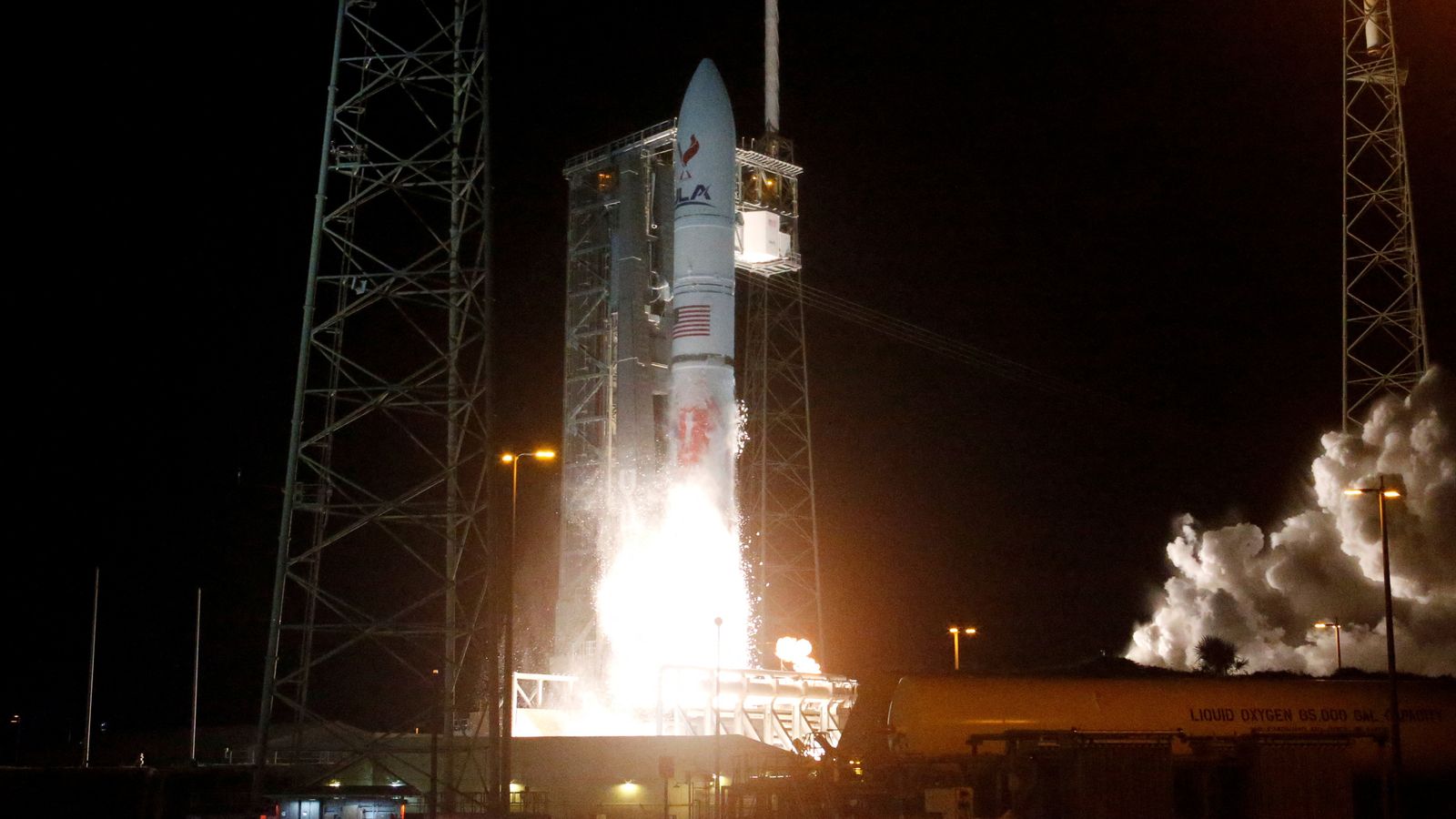A private lunar lander which launched from the US this morning has suffered an “anomaly” – with experts trying to resolve the issue.
Peregrine Mission-1 – which took off on a new Vulcan rocket at 7.18am UK time – aimed to become the first US spacecraft due to land on the moon’s surface since Apollo 17 in 1972 and appeared to lift off into space as planned.
But, American company Astrobotic, in control of the launch, said an “anomaly” has since occurred.
They said: “After successfully separating from United Launch Alliance’s Vulcan rocket, Astrobotic’s Peregrine lunar lander began receiving telemetry via the NASA Deep Space Network.
“Astrobotic-built avionics systems, including the primary command and data handling unit, as well as the thermal, propulsion, and power controllers, all powered on and performed as expected.
“After successful propulsion systems activation, Peregrine entered a safe operational state.
“Unfortunately, an anomaly then occurred, which prevented Astrobotic from achieving a stable sun-pointing orientation. The team is responding in real time as the situation unfolds and will be providing updates as more data is obtained and analysed.”
Follow as it happened: Updates as Peregrine Mission-1 blasted off
NASA has paid Astrobotic, a space logistics start-up, just $108m (£85m) for five scientific instruments to be carried to the moon, a fraction of the cost of launching its own mission.
The robotic lander, which is the size of a garden shed, was also carrying the remains of several Star Trek cast members and the DNA of former US president John F Kennedy.
A landing on the moon was scheduled for 23 February.
Astrobotic chief executive John Thornton has previously said that the craft will spend 12 days in transit between the Earth and lunar orbit but the bulk of the time will be waiting, circling the moon, for the “local lighting conditions” of the team’s landing site to be correct.
Part of the reason for the renewal of interest in lunar missions is the discovery of water on the moon, which could hydrate astronauts and be the source of oxygen and fuel – saving future trips from having to store their own supplies.
It’s hoped the moon could provide a staging post for missions to Mars or even beyond.
This breaking news story is being updated and more details will be published shortly.
Please refresh the page for the fullest version.
You can receive Breaking News alerts on a smartphone or tablet via the Sky News App. You can also follow @SkyNews on X or subscribe to our YouTube channel to keep up with the latest news.












